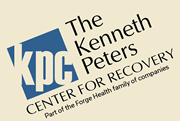Medication-Assisted Therapies
Medication-assisted treatment (MAT) is the use of medications, in combination with counseling and behavioral therapies, to provide a “whole-patient” approach to the treatment of substance use disorders.
Medications used in MAT are approved by the Food and Drug Administration (FDA) and MAT programs are to be clinically driven and tailored to meet each patient’s needs.
Research shows that a combination of medication and therapy can successfully treat these disorders, and for some people struggling with addiction, MAT can help sustain recovery.
MAT is used to prevent or reduce opioid overdose and to alleviate the compulsive cravings for opiates and alcohol. Unfortunately, too many providers prescribe medication without addressing the behavioral and mental health issues that are the jet fuel that pushes the craving to use.
THERE IS NO MAGIC MEDICINE FOR ADDICTION. THERE IS NO ELEVATOR TO ABSTINENCE. YOU HAVE TO TAKE THE STEPS.
Science has come a long way in helping us understand how drugs of abuse change the brain. Research has revealed that addiction affects the brain circuits involved in reward, motivation, memory, and inhibitory control. When these circuits are disrupted, so is a person’s capacity to freely choose not to use drugs, even when it means losing everything they used to value.
In fact, the inability to stop is the essence of addiction, like riding in a car with no brakes.
There are many medications available to help the user decrease or eliminate cravings.
ALCOHOL:
CAMPRAL
Introduced in mid-2004, Campral is a very effective medication for the treatment of alcoholism. Patients report virtually no side effects and reduction in cravings. The downside is patient compliance. It requires dosing three times daily.
REVIA
Approved for use in 1994, naltrexone is an effective medication to help patients with cravings. Taken orally, 50mg daily. The down side is it is taken daily, and when a patient wants to use, they stop the medication and it’s out of their system in 24 hours. Revia is effective for alcohol and opiate dependence.
VIVITROL
Originally approved for alcohol dependence, Vivitrol is a tool to help reduce alcohol cravings. In addition, when a patient drinks on Vivitrol, they will get no “high” or pleasure. They will, however, get drunk.
OPIATES:
NALTREXONE: (ORAL REVIA AND INJECTIBLE VIVITROL)
The mechanism of action of Naltrexone hydrochloride in alcoholism is not understood; however, involvement of the endogenous opioid system is suggested by preclinical data. Naltrexone, an opioid receptor antagonist, competitively binds to such receptors and may block the effects of endogenous opioids.
BUPRENORPHINE: Brand names: Suboxone, Subutex, Zubsolv, Bunavai, Buprenex, Butrans, Temgesic, Sublicade
It is a partial angonist that helps manage cravings while allowing the body to rebuild it's natural endogenous opioid system. Works well for extended outpatient detox. Any doctor may prescribe.
DOES HAVE ABUSE POTENTIAL AND STREET VALUE.
At KPC, when Buprenorphine is indicated, we prefer inducting the patient on to injectible buprenorphine (Sublicade) as when the patient is ready to come off it, there is no withdrawal syndrome as in other forms of buprenorphine.
We will work with you or your loved one to find the best possible supports needed to cross the bridge from active use to recovery.
You can do this....we can help you.

